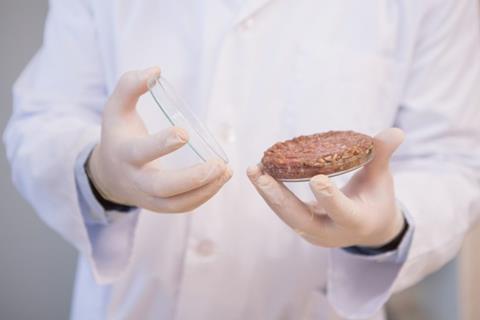Cultured ‘meat’ products are a continuing topic of interest across the pond, with the U.S. Department of Agriculture (USDA) and the U.S. Food and Drug Administration (FDA) announcing they will oversee production.

The two organisations recently held a public meeting to discuss the use of livestock and poultry cell lines for food products. At this meeting, stakeholders shared perspectives on the regulation needed to both foster these new food products and maintain high standards of public health.
After several discussions between the two agencies that incorporated stakeholder feedback, USDA concluded that both USDA and FDA should jointly oversee the production of cell-cultured food products derived from livestock and poultry.
The agencies have announced agreement on a joint regulatory framework wherein FDA oversees cell collection, cell banks, and cell growth and differentiation.
A transition from FDA to USDA oversight will occur during the cell harvest stage. USDA will then oversee the production and labelling of food products derived from the cells of livestock and poultry.
The agencies have said they are actively refining the technical details of the framework, including collaboration and information sharing between the organisations to allow each to carry out their own respective roles.
US non-profit organisation the Good Food Institute has responded to the news. Director of policy Jessica Almy, Esq., said: “Cell-based meat deserves a clear regulatory path to market, as called for by the National Academy of Sciences. This announcement is an exciting indication that FDA and USDA are clearing the way for a transparent and predictable regulatory path forward.”
USDA and FDA say they are confident that this regulatory framework can be successfully implemented and assure the safety of cell-grown products.
Because the agencies have the statutory authority necessary to appropriately regulate cell-cultured food products derived from livestock and poultry, the administration does not believe that legislation on this topic is necessary.
This story was originally published on a previous version of the Meat Management website and so there may be some missing images and formatting issues.















